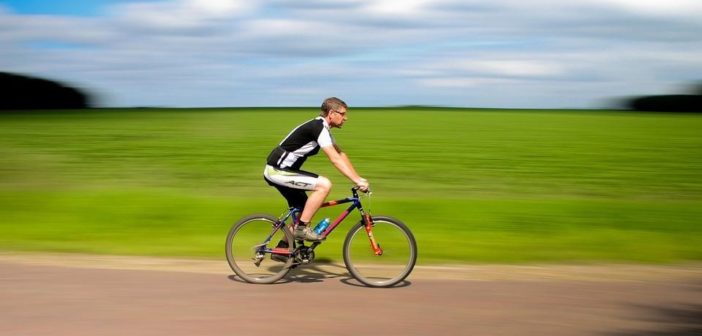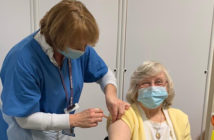Cycling is being advocated more highly than ever, in a two-pronged effort to improve public health and fitness, and reduce carbon footprints and the consumption of fuel.
As one of the healthiest methods of travel that also produces no pollution, cycling is more common than ever. Following the success of the Boris Bike scheme in the capital, large cities all over the UK have began establishing their own bicycle hire projects. But with more cyclists than before bicycle accidents are also more prevalent. With this in mind, here is what every cyclist should know in order to stay safe, and know what to do in the event of an accident.
The Causes
Bicycles are inherently a more dangerous form of road transport than cars and other enclosed vehicles, so cyclists have to take steps to protect themselves from potential risks on the road, and to travel safely in relation to other vehicles around them. Although every incident is slightly different, a lot of bicycle accidents are brought on by the same few factors:
- Inattentive riding
- Riding too fast
- Riding too close to other lanes of traffic
- Intersection and lane merging
- Riding on pavements, driveways or car parks
Understanding the factors that often cause accidents can really help riders to be aware of where risks might crop up and be more alert while on the road. Statistics show that 100 people are killed in bicycle accidents in Britain every year, and a further 3000 people are seriously injured. Erring on the side of caution when it comes to bike riding means letting go of the assumption that other drivers can see you, or will otherwise accommodate you.
Prevention is the Key
In spite of cycling already presenting a number of risks, cyclists have garnered a reputation over the years for deviating from the rules of the road. This is not only annoying, but dangerous, and lack of regard for the road and other vehicles is a major cause of accidents. Cyclists have a responsibility to ride safely, so revision of the Highway Code and its regulations for cyclists is an essential first step. Failure to ride in adherence to the rules laid out in the Highway Code could see the liability for any subsequent accident being that of the rider.
The correct protective clothing and equipment is also vital. Full hi-vis clothing, an undamaged helmet, sturdy footwear and bike lights all help to make sure cyclists are seen at all times, and accommodated by other drivers. Helmets should always be replaced following impact, as this lessens their integrity and prevents them from offering full protection. Extra care should be taken during harsh weather conditions, and bikes should be properly maintained, and kept in roadworthy order. Again, all of these points are legal requirements of cyclists on the road, as specified in the Highway Code, and failure to abide by them not only jeopardises the safety of the rider and others, but is in direct violation of the law.
When Accidents Happen
Road accidents are frightening, and very often, they seem to come out of the blue, which causes the body to surge with adrenaline. So although it may be difficult, it is important to try to remain calm immediately following an accident, and seek help. In most instances, the other party in the accident will be just as shaken up by the incident, and rush to the aid of a cyclist (providing, of course, that they themselves are not injured). In the case of a hit-and-run, appeal to anybody nearby for help, and ensure that they call both an ambulance and the police.
With the help of the authorities and medical professionals, cyclists involved in accidents should make effort to collect as much evidence of the incident as possible, to make sure that the issue is resolved in the most beneficial way. Photographic evidence of the scene is highly desirable, and supporting evidence should include details such as the names and contact details of all parties involved, the make, model and registrations of any vehicles involved, and details of any injuries or other damage sustained. Following an accident, copies of all reports and documents made by medical professionals and police should be obtained and kept as evidence.
Legal Advice
Although it may be the furthest thing from your mind following a bicycle accident, it is always wise to seek advice from a legal expert, even if you feel relatively well. This is because in many cases, the longer term impacts of the accident are not immediately present. Having a legal professional on board who can look at the details of the incident and give suggestions as to the best way to deal with the situation can help make sure you don’t miss any important steps early on. If a solicitor or legal professional believes there is cause, they may recommend that you pursue compensation for the accident, in which case they can help process the case and give an understanding of how to claim cycling accident compensation. The aftermath of an accident can be more long-term than some expect, and can cause immediate financial and work-related difficulty, so pursuing compensation can be the best way to ensure that no one involved in an accident is out of pocket while they recover.
Although cycling is an efficient, healthy and environmentally-friendly way to get around, it is not without its risks. In many cases, these can be prevented by taking the right precautions, such as regular maintenance of bicycles, working lights and commitment to wearing hi-vis clothing, but even the wisest and most safety-conscious cyclists can still find themselves involved in road accidents. When accidents occur, it is important that the needs of the injured party are looked out for, to support them during a difficult time, and ensure they have everything they need to achieve recovery. If considering going down the legal route following an accident, seek the advice of a reputable legal professional .




